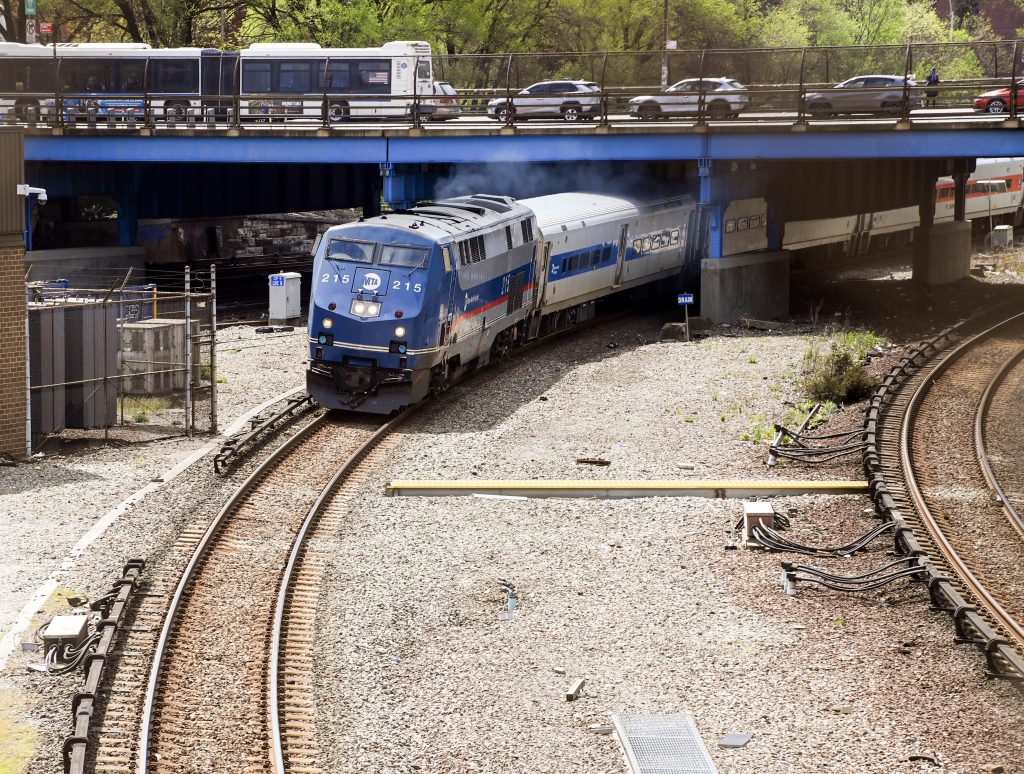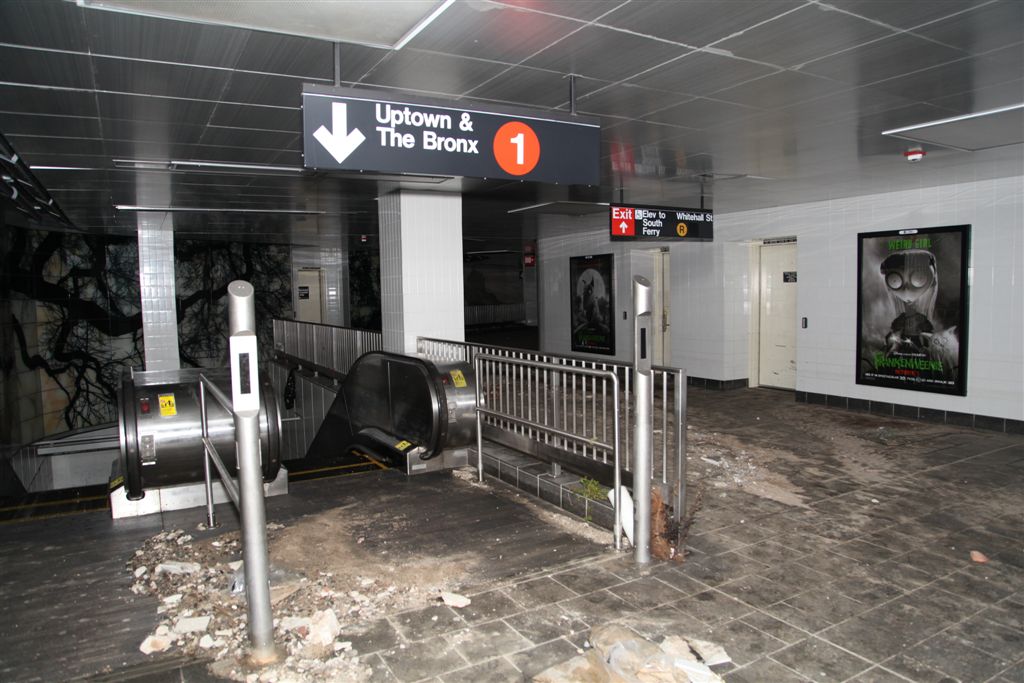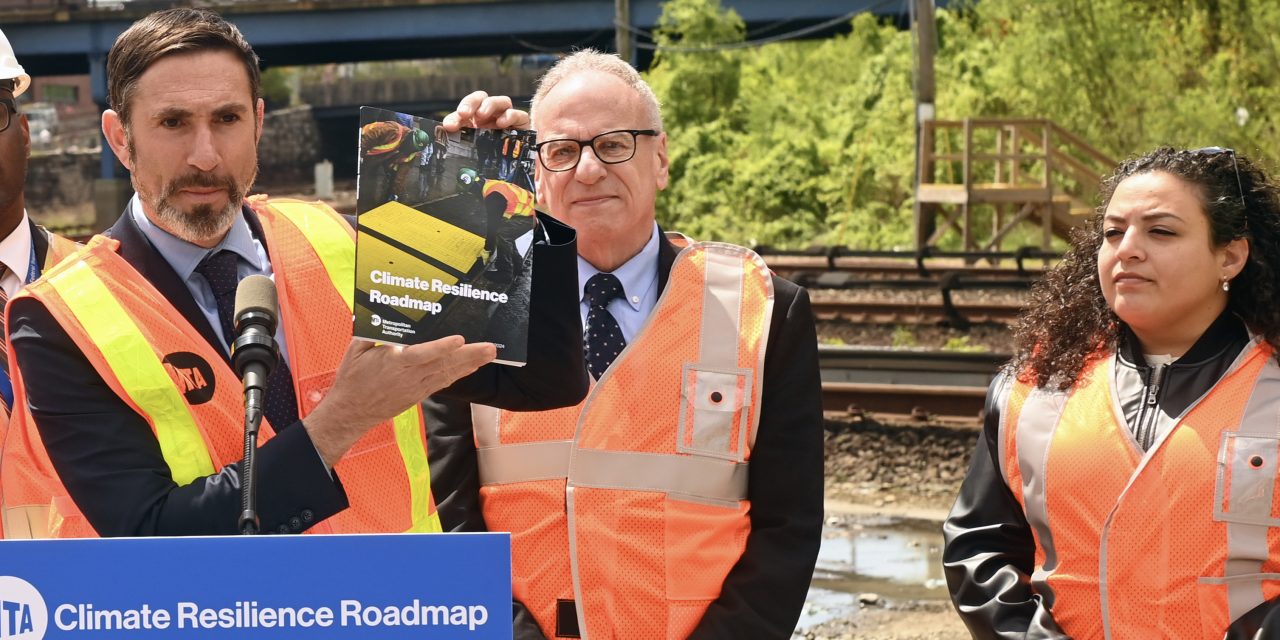With approximately 4.5 million daily riders, the New York City subway system is by far the busiest and most expansive rapid-transit network in the U.S. It also is among the most vulnerable to climate change-induced flooding, nestled within a region that has experienced a more-than-70% increase in the frequency of heavy precipitation events within recent decades — a far faster acceleration than observed in any other U.S. region.
New York’s Metropolitan Transportation Authority (MTA), which manages the subway system as well as the greater metro area’s regional railway network, has long regarded stormwater flooding as a major threat to the system’s longevity and day-to-day operations. This threat was apparent during Tropical Storm Ida in 2021, which MTA estimates caused USD $128 million in damages to New York’s transit infrastructure and incapacitated crucial evacuation routes for some of the city’s most flood-prone neighborhoods.

Recent MTA analyses suggest that under a high-emissions climate-change scenario, New York could experience as much as twice the number of extreme storms it currently weathers per year by the 2050s. For that reason, the agency is proposing an extensive and aggressive set of actions to fortify New York’s transit network against flooding. MTA’s Climate Resilience Roadmap, released in April, prescribes USD $6 billion in investments over the next decade to perform such activities as elevating critical structures above anticipated flood depth, installing new drainage and pumping equipment, and enhancing existing city programs that target climate resilience.
MTA Chair and CEO Janno Lieber described investments in public transportation as a powerful tactic against climate change. By keeping private vehicles off New York City roadways, the transit system prevents approximately 20 million metric ton (44 billion lb.) of carbon emissions each year.
“Transit is the antidote to climate change, which is why we have to preserve and improve New York’s amazing subway, bus, and commuter rail systems,” Lieber said in a statement. “But our transit system is still vulnerable to the effects of climate change, so we need to execute on this visionary resiliency plan, which has been designed to ensure the reliability and safety of New York’s transit system for years to come.”
Sizing Up Climate Threats
At the heart of MTA’s Climate Resilience Roadmap is a thorough assessment of the vulnerabilities the agency expects its infrastructure to face over the next 50 years, which provides a technical foundation for the roadmap’s priority actions.

This assessment process begins with a series of authoritative climate change projections for the New York region at different time frames, assuming carbon-emission rates remain high. The agency gathered these datapoints — covering such factors as sea level rise, coastal storm surge, extreme precipitation, and others — from a range of sources including the U.S. National Oceanic and Atmospheric Administration, the U.S. Geological Survey, the New York City Panel on Climate Change, and the American Society of Civil Engineers (Reston, Virginia).
MTA then took stock of its range of infrastructure, including transit stations, power systems, tunnels and bridges, depots and maintenance facilities, and more, to project how each of its assets might respond to climate change–induced flooding through 2080. Crucially, the process considers the effects of the city’s substantial previous investments in climate resilience, including approximately USD $87.7 million in stormwater-focused subway capital projects implemented by MTA since 2007.
The scope of the vulnerability assessment, as well as the Climate Resilience Roadmap, transcends flooding alone. It also incorporates such facets of climate change as wind speeds and extreme heat, both of which threaten transit infrastructure.
Targeting Flooding, Heat, and Wind
The Climate Resilience Roadmap establishes 10 core goals to address climate-related threats facing MTA infrastructure, each accompanied by a set of short-term (5 years away or less) and long-term (more than 5 years away) actions as well as an estimated price tag to achieve them.
- Shield subway stations and tunnels from stormwater (USD $500 million to $1 billion). Enhance collaboration with other municipal agencies to maintain catch basins, curbs, and siphons; increase the frequency of grout and leak inspections on belowground subway walls; install new sidewalk-level flood protection measures; as well as enhance pumps and stormwater detention capabilities.
- Protect subway yards from flooding (USD $500 million to $1 billion). Elevate, rebuild, replace, or install new surface-level drainage system assets such as pumps, storm sewers, inlets, and lift stations.
- Protect open subway infrastructure from flooding (USD $250 million to $500 million). Support existing efforts that enhance flood protections for aboveground subway lines, such as the New York City Department of Environmental Protection’s Bluebelts project, while advancing improvements to drainage and pumping capacities.
- Safeguard bus depots from flooding (USD $500 million to $1 billion). At chronically impacted bus depots, implement flood mitigations such as backwater valves and equipment elevations, as well as coastal surge protections such as deployable flood panels and flood logs.
- Manage floods on city streets (less than USD $50 million). Focus on new flood-control infrastructure at bridges and tunnels while also exploring altered bus routes to avoid locations prone to tidal flooding.
- Mitigate Long Island Railroad flooding (USD $500 million to $1 billion). Identify priority areas along railroad tracks for possible elevation above flood-prone areas as well as design or enhance drainage systems serving locations where elevation is infeasible.
- Reduce Metro-North Railroad flooding (more than USD $1 billion). Take steps to mitigate shoreline erosion and stabilize steep slopes that could facilitate flooding and improve real-time sensor coverage for flooding and extreme weather.
- Expand underground air circulation and cooling (USD $50 million to $250 million). Install platform fans in underground stations, implement remote heat sensors to detect extreme heat, and explore practices that may reduce heat in subways such as regenerative braking and sliding platform doors.
- Protect outdoor infrastructure from heat (less than USD $50 million). Paint high-heat track segments white to better mitigate heat and explore implementation of more heat-resistant materials for new capital projects, as well as deploy temperature and expansion sensors systemwide.
- Address heat and wind impacts on bridges (less than USD $50 million). Pilot and adopt materials to reduce heat-induced expansion of bridge joints and asphalt pavements, continually exploring emerging materials as they become available.
“Our transit systems are being directly impacted by climate change, from mudslides on the Hudson Line to flooding in our subways and busways,” New York Governor Kathy Hochul said at an event announcing the plan. “The Climate Resilience Roadmap is an essential component of making sure our critical infrastructure can withstand extreme weather events and keep New Yorkers moving safely.”
Read the full Climate Resilience Roadmap at the MTA website.
Top image courtesy of Marc A. Hermann/MTA

ABOUT THE AUTHOR
Justin Jacques is editor of Stormwater Report and a staff member of the Water Environment Federation (WEF). In addition to writing for WEF’s online publications, he also contributes to Water Environment & Technology magazine. Contact him at jjacques@wef.org.




